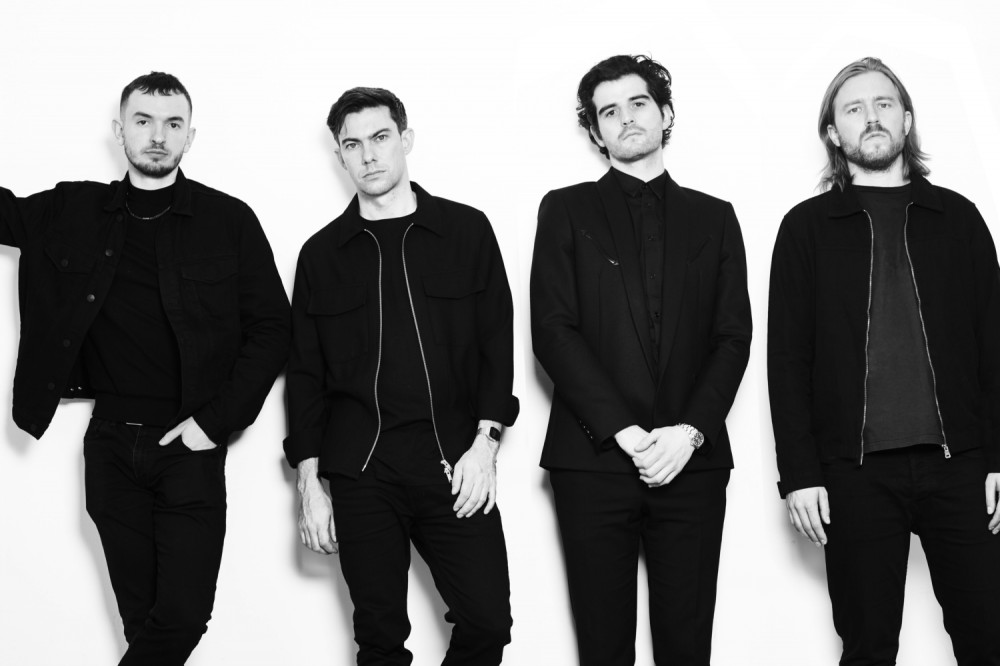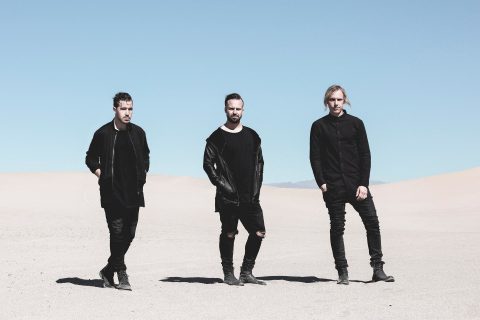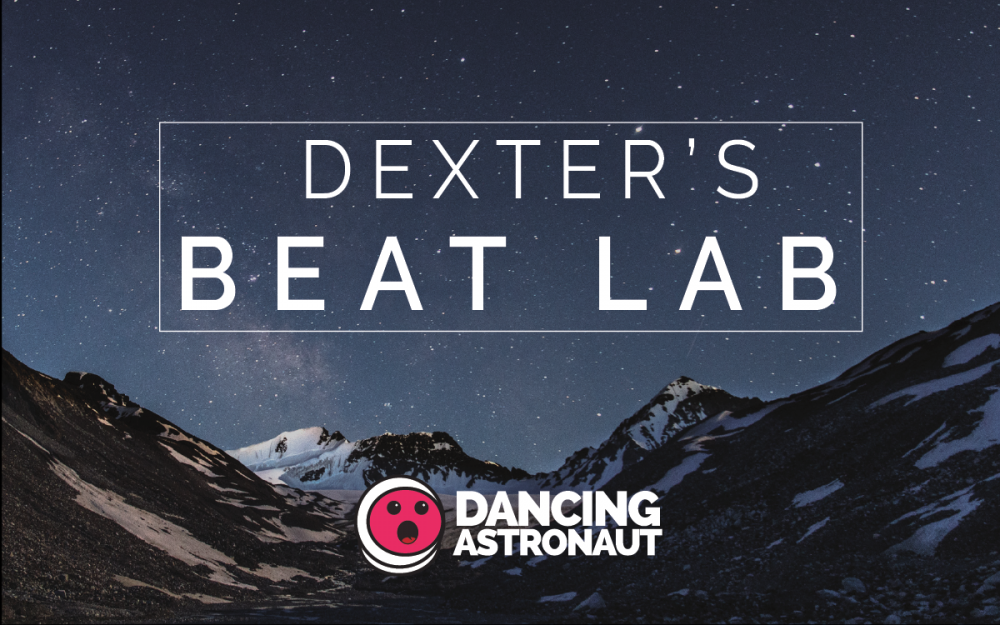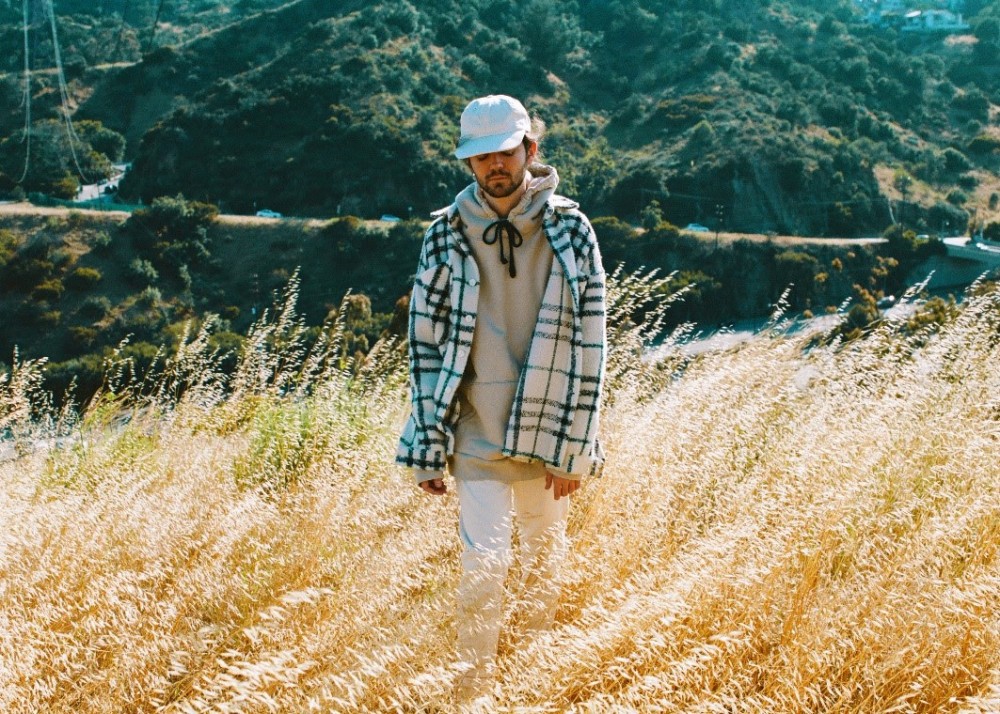
How WORSHIP collective's tour intends on igniting North American drum ‘n’ bass [Q&A]
Approaching almost 30 years of existence, drum ‘n’ bass has been loved in international territories far and wide—from its homegrown roots in the UK to widespread European countries, and Australia—but never found quite the same foothold in North America. WORSHIP wants to change that. Comprised of Sub Focus, Dimension, Culture Shock, and 1991, the collective embodies the vision of turning the North American drum ‘n’ bass scene into a reality.
Established in 2017 by Director and Founder Sebastian Weingartschofer, WORSHIP has brought the leading UK drum ‘n’ bass producers under one roof in an effort to attract North American listeners. Welding their combined platforms and artistic distinctions as innovators in their respective scenes, the WORSHIP artists have played over 50 festivals and 200 club shows worldwide and cumulatively amassed more than 216 million Spotify streams in the last year alone.
![How WORSHIP collective's tour intends on igniting North American drum ‘n’ bass [Q&A]](https://dancingastro-wpengine.netdna-ssl.com/wp-content/uploads/2020/02/WORSHIP-tour-LA_photo-credit-sam-neill-700x560.jpg)
WORSHIP’s core strategy for catalyzing the North American drum ‘n’ bass movement focuses on the event front in their delivery of top-notch drum ‘n’ bass parties. With emphasis on key cities including Los Angeles, New York, Denver, Toronto, and Vancouver, the WORSHIP tour is showcasing the genre in a revitalized sleekness supported by strongly cohesive visual and production aspects.
Having embarked on the seven-date tour including two sold-out shows and with Steve Aoki‘s photographer Sam Neill in tow to capture it all, WORSHIP also went on to partner with Insomniac’s Bassrush to deliver an exclusive four-way back-to-back performance in the Hollywood Hills prior to their Los Angeles showing. With the second leg of their tour nearing, the likeminded collective are already proving to be one of the most exhilarating drum ‘n’ bass brands to watch in North America.
EDM All Day has delved into a roundtable discussion with WORSHIP about their strategy to engage North American audiences and insights into the state of drum ‘n’ bass. Read the full Q&A below.
WORSHIP is currently on tour. Catch their show dates here.
What are the core values that all of you in the WORSHIP collective share?
Sebastian: I believe every single one of these artists are striving for originality and innovation in their field of music. There is a strong emphasis on quality control, attention to detail and sheer determination to make an impact in the world of music, which ultimately helps them to stand out as artists. The guys have a shared sense of creativity and their like mindedness allows them come together as a collective to help drive drum ‘n’ bass as a genre worldwide. I mean, they pretty much see each other every single day of the week which really helps move things forward—whether it’s Monday to Friday at a studio complex where they all have their own rooms in London, or when they perform at the same shows on the weekend. There is a synergy between these guys which is unparalleled and it’s incredibly exciting to be part of the journey.
Sub Focus: We all strive to make electronic music of the highest quality specialising in drum ‘n’ bass. I think what unifies us as a collective is we all look strongly outside of the drum ‘n’ bass scene for our influences and inspiration. We are also trying to visually represent our music with the same high standards. The other guys in the collective all have amazing quality control, are probably the most played artists in my set and the hardest thing about this tour is what to play when we can’t play each others tracks! We are also all good friends so we thought it could be fun to do a tour together over here.
Dimension: We’re a group of friends who like the same things.
Culture Shock: I think we’re all equally driven, while we have different styles and approach our projects as individuals we share similar aesthetic standards…there’s a lot of crossover of our taste, being surrounded like minded artists on a daily basis is really beneficial…we’re often checking in on each others projects and offering feedback.
![How WORSHIP collective's tour intends on igniting North American drum ‘n’ bass [Q&A]](https://dancingastro-wpengine.netdna-ssl.com/wp-content/uploads/2020/02/Dimension-WORSHIP-tour_photo-credit-sam-neill-700x560.jpg)
Photo Credit: Sam Neill
When did you recognize the need for UK drum ‘n’ bass artists to shift their focus towards North America’s electronic landscape?
Sebastian: Drum ‘n’ bass is a globally renowned dance music genre and highly successful in the UK, Europe, Australia and New Zealand and is the third best selling genre on Beatport with drum ‘n’ bass tracks regularly hitting the No.1 spot—so we asked ourselves, why is this not reflected in the North American market?
It’s difficult for worldwide drum ‘n’ bass artists and labels to invest in North America as part of their strategy as it can be time consuming and expensive to spend time on the ground, with currently not much return. Therefore, the lack of emphasis on time spent in North America means there is less chance to create an environment in which drum ‘n’ bass can flourish outside of online.
However, with Dubstep now one of the most popular genres of EDM in the US, which shares similarities to drum ‘n’ bass in terms of sonic/energy and being branded as “bass music”, we feel that foundations have been set for the drum ‘n’ bass sound to become a natural progression for North America in the wake of Dubstep, and there is definitely an opportunity to attract the next generation of EDM fans.
There are a lot of North American based artists and labels doing incredibly positive things for drum ‘n’ bass in the territory and we want to try and to help with momentum if we can.
Sub Focus: I’ve toured out here for quite a few years now, playing at many major festivals in North America—Coachella, EDC, Ultra and more. I’ve seen dance music grow from something small over here to the huge EDM scene you guys have today. I’d love to see our style of dance music grow as big as it has in other parts of the world. We just want to make sure we are showing people what we see as the best the genre has to offer in North America by throwing parties where we have more control to do things right.
Dimension: Drum ‘n’ bass doesn’t have to be “drum ‘n’ bass”, it’s just dance music. Our American friends are genetically identical to us, just let yourself be free and embrace it.
![How WORSHIP collective's tour intends on igniting North American drum ‘n’ bass [Q&A]](https://dancingastro-wpengine.netdna-ssl.com/wp-content/uploads/2020/02/culture-shock-LA-Worship-tour_photo-credit-sam-neill-700x565.jpg)
Photo Credit: Sam Neill
If one of the keys to igniting a drum ‘n’ bass movement in North America is the event aspect, how does WORSHIP specifically plan on tailoring its programming and production to American listeners?
Culture Shock: I think we all agree on what a good show looks like, whether it’s a big festival stage, warehouse environment or intimate club. If we can bring the best of those events to the US it will engage with the public I don’t think it really matters what territory an event is in a good show is a good show.
Sebastian: We believe the quality and consistency of shows need to improve, with an emphasis on production. We plan to tour North America annually in key territories to result in: an increase of event attendees and enjoyable experience; in turn inspiring attendees who then experiment with production / DJ at a grass roots level; this builds an environment where more drum ‘n’ bass music becomes available for North American labels to consider signing; ultimately increasing chances of a spearhead North American artist increasing to help create a movement, like Skrillex has done with Dubstep.
Sub Focus: I think this grassroots point is really important. I’ve noticed when the drum ‘n’ bass scene grows in different territories it’s almost always down to homegrown artists: Pendulum in Australia, Netsky in Belgium, Camo & Krooked in Austria—the list goes on. We want to do as much as we can to help grow this and promote local artists to help create a vibe for the scene we love out here.
Sebastian: Another key aspect for us is to support newcomer North American talent in each territory. We will hand pick specific artists that we are fans of, to perform at our shows and give them a platform to be exposed in front to our fans, as well as the potential to work together in the studio. What is unique to our tour is the sound that we’re collectively pushing. As mentioned, there is a synergy between the guys’ sound that has received worldwide support and we believe all of these combined elements can help translate the genre to the North American audience.
Dimension: We made a decision to strictly work with people who share our vision and ideology. That means high standards across the board, from venue selection to investing heavily in production. We want to impress.
![How WORSHIP collective's tour intends on igniting North American drum ‘n’ bass [Q&A]](https://dancingastro-wpengine.netdna-ssl.com/wp-content/uploads/2020/02/Sub-Focus-WORSHIP-tour-LA_photo-credit-sam-neill-700x560.jpg)
Photo Credit: Sam Neill
Drum ‘n’ bass has often found its spotlight in underground settings, with club shows taking the reign in terms of impact and appeal. Will WORSHIP’s approach for capturing American fans be the same or move towards a larger mainstream capacity?
Sub Focus: I actually completely disagree with this—we regularly play at mainstream festivals and on huge stages across the world. Drum ‘n’ bass has been filling festival stages for a long time. It’s a genre that has largely stayed away from the mainstream in terms of sound, but this adds to its underground appeal. I would love the genre to grow in North America and we feel that coming over and putting extra effort into our club events and tours and showing love to each local scene and producers is the way forward. We are still obviously going to be playing at festivals over here too. I’m back here to play Ultra in Miami in March, then later in the summer too.
Who are your top contenders for the US artist to spearhead the drum ‘n’ bass movement, if any?
Sebastian: There are a lot of new names currently making waves in North American drum ‘n’ bass which is amazing to see. Likewise, well known and established US DJs and labels are supporting more and more drum ‘n’ bass like: Skrillex, RL Grime, Zeds Dead, Jauz and more. Also, we have to shout out the many producers and DJs that have paved the way for the way for the drum ‘n’ bass sound in North America: guys like Dieselboy, Gridlok, Hive, DJ Craze and more.
If we had to pick names, it would come down to the below with a couple of the names supporting us on the tour: Flite, Reaper, Boxplot and Kallan HK.
- Flite – “Tragedy, Humanity“
- Rusko – “Hold On (Reaper Remix)”
- Boxplot & Ownglow – “Polaroids of You“
- Ownglow – “Back To You“
What does the next generation of electronic music fans look like to you?
Sub Focus: I’ve noticed many more fans in the US gravitating towards deeper styles of house music—I feel like EDM fans of previous years are becoming more discerning and getting more into more underground genres of the electronic landscape.
Dimension: With the huge EDM boom declining, audiences are becoming more discerning. People are deciding what music they like for themselves, instead of pretending they’re having fun at festivals because they’ve been told what’s cool.
![How WORSHIP collective's tour intends on igniting North American drum ‘n’ bass [Q&A]](https://dancingastro-wpengine.netdna-ssl.com/wp-content/uploads/2020/02/1991-WORSHIP-LA_photo-credit-Sam-Neill-700x592.jpg)
Photo Credit: Sam Neill
As one of the scene’s rising stars, you have garnered support from revered industry names outside of drum ‘n’ bass. What perspectives do you bring to WORSHIP as a newcomer who has seen success outside of their scene?
1991: In music I’ve always aimed to bring diversity and outside influences to what I do, and I think this is reflected in what I bring to worship. I think I’m considered slightly different to the other three guys through my trap/future bass influences, as well as sonically different production techniques. I recently released a trap single on RL Grimes imprint Sable Valley as an example of some of my non-drum ‘n’ bass ventures.
As an internationally renowned producer, your sound has been equally matched by your sharp attention to aesthetic. Do you think visuals are integral in revitalizing the drum ‘n’ bass industry to appeal to the newer generation?
Dimension: Music comes first.
How crucial are labels’ roles in invigorating the scene?
Culture Shock: In this day and age it’s all about the artist. There’s a huge amount of freedom to do your own thing with the tools at your disposal, and artists don’t necessarily need to rely on labels the same way they used to.
Sebastian: Artist distribution companies allow artists to easily release their own music, which means there isn’t so much of a need for a record label anymore. Of course established labels can help expose newcomer artists, but if you have a following and a strong enough brand, going on your own can have far more preferable benefits.
I personally feel like collectives have taken the place of the record label. Take WORSHIP for example—the artists all have their own individual label deals or self release, but we come together as a collective playing at events etc under the WORSHIP umbrella.
Your name has been synonymous with drum ‘n’ bass, but you’ve always diversified your sound outside the genre. Do you believe there’s a growing emphasis on cross-genre sound and will this help the case for drum ‘n’ bass’ popularity?
Sub Focus: I think that writing music in other genres of dance music; House and Dubstep and making crossover tracks such as my remix of Rusko’s Hold On has definitely helped my popularity in North America. However I am mostly concentrating on drum ‘n’ bass at the moment—if the music we make is good enough it should crossover regardless of style of tempo.
Ultimately, we are excited about what we can do together as a collective and that’s what this tour is all about.


